Hyundai Tucson vs Dacia Bigster – Suorituskyky, toimintamatka ja kulutus vertailussa
Molemmilla malleilla on vahvuutensa – mutta kumpi sopii sinulle paremmin?
Vertaa suorituskykyä, kulutusta, hintaa ja tiloja suoraan: Hyundai Tucson vai Dacia Bigster?
The Clash of SUVs: Hyundai Tucson vs Dacia Bigster
In the competitive world of SUVs, the Hyundai Tucson and the Dacia Bigster are two prominent contenders, each vying for attention on the bustling automotive scene. With their distinct features, varying technical specifications, and innovative technologies, these models cater to different audiences. Let's delve into this riveting SUV showdown.
Under the Hood: Engine Performance
Hyundai's Tucson offers a diverse range of engine options, including Diesel MHEV, Petrol MHEV, Full Hybrid, and Plugin Hybrid, making it appealing to a wide range of eco-conscious and performance-focused consumers. With power output ranging from 136 HP to a robust 252 HP, the Tucson's top-performing engine can sprint from 0-100 km/h in a mere 7.9 seconds. The Plugin Hybrid variant excites with a significant electric range of up to 70 km, ideal for urban commuting.
On the other hand, the Dacia Bigster focuses on simplicity and efficiency, equipped with Petrol MHEV, Full Hybrid, and LPG engines. Its power caps at 155 HP, translating to a(n) 0-100 km/h of 9.7 seconds, which might not match the Tucson's fastest, but offers adequate efficiency and reliability. For those who prioritize fuel efficiency, the Bigster's LPG variant presents an extraordinary consumption rate of just 4.7 L/100 km.
Transmission and Drive Dynamics
Both SUVs offer a range of transmission options. The Tucson provides flexibility with both automatic and manual transmissions, including a sophisticated Dual-Clutch Automatic system. It also offers both Front-Wheel and All-Wheel Drive configurations, allowing for adaptability in various terrains and driving conditions.
Conversely, the Bigster maintains a straightforward approach with manual and automatic transmissions. It, too, offers both Front-Wheel and All-Wheel Drive systems but places emphasis on the simplicity of a manual gearbox across its range.
Size and Comfort
When it comes to space, the Dacia Bigster offers a slightly longer frame at 4570 mm compared to Tucson's 4520 mm, potentially resulting in more cabin space. Despite this, both SUVs provide comfortable seating for five passengers. The Bigster boasts a trunk capacity of up to 667 liters, offering generous cargo space for families and road trips, compared to the Tucson's maximum of 620 liters.
The Tucson is somewhat broader at 1865 mm in width, promising a reassuring presence on the road and potentially more interior room width-wise, while the Bigster stands slightly taller at 1705 mm, commanding attention in urban landscapes.
Weight, Efficiency, and Environmental Impact
In terms of weight, the Tucson can weigh up to 1889 kg depending on the variant, compared to the Bigster's hefty maximum of 1503 kg, an aspect that influences fuel consumption and efficiency. The Hyundai Tucson offers extensive solutions for fuel economy, with its Plugin Hybrid variant capable of reaching as low as 1.2 L/100 km when in optimal conditions. Meanwhile, the Bigster balances its efficiency with its mild-hybrid systems, reflecting its CO2 emissions as low as 106 g/km, which stands out for environmentally mindful consumers.
Conclusion: Evaluating the Essentials
The Hyundai Tucson stands out with its broad spectrum of powertrains and hybrid technologies, tailored for those who value performance, technology, and environmental considerations. It serves the needs of a more tech-savvy and economy-conscious buyer, coupled with luxury and advanced driving dynamics.
Conversely, the Dacia Bigster captivates with its emphasis on practical benefits, such as its spacious trunk and efficient energy consumption, ideally suited to cost-conscious drivers who seek reliability and simplicity without compromising on necessary modern utilities.
Ultimately, choosing between these two SUVs depends on individual priorities: the Tucson excels in diversification and power, while the Bigster offers value-focused practicality and efficiency. As the automotive industry continues to evolve, both models contribute their unique strengths to the SUV market.
Tässä mennään yksityiskohtiin: tekniset erot tarkemmin
Kustannukset ja kulutus: Hinta ja kulutus ovat tärkeimpiä ostopäätökseen vaikuttavia tekijöitä – ja juuri täällä erot usein korostuvat.
Dacia Bigster on hinnassa ratkaiseva edullisempi – sen lähtöhinta on 24000 €, kun taas Hyundai Tucson maksaa 35700 €. Ero on noin 11750 €.
Polttoaineenkulutuksessa näkyy ero: Hyundai Tucson kuluttaa 1 L ja on siten selvä taloudellisempi kuin Dacia Bigster, jonka kulutus on 4.70 L. Ero on noin 3.70 L /100 km.
Moottori ja suorituskyky: Teho, vääntömomentti ja kiihtyvyys kertovat paljon auton ajotuntumasta. Tässä näkyy, kumpi tarjoaa enemmän ajamisen iloa.
Moottoritehossa Hyundai Tucson on erottuva etulyöntiasemassa – 252 hv verrattuna 155 hv:een. Ero on noin 97 hv hv.
Kiihdytyksessä 0–100 km/h Hyundai Tucson on huomattava nopeampi – 7.90 s vs. 9.70 s. Ero on noin 1.80 s sekuntia.
Huippunopeudessa Hyundai Tucson on vähäinen edellä – se yltää 194 km/h:een, kun taas Dacia Bigster saavuttaa 180 km/h. Ero on noin 14 km/h.
Vääntömomentissa näkyy myös ero: Hyundai Tucson vetää selvästi havaittava voimakkaammin, 367 Nm verrattuna 230 Nm:een. Eroa on noin 137 Nm.
Tila ja käytännöllisyys: Tehon ohella arjessa ratkaisevat mukavuus ja käytännöllisyys. Tässä selviää, kumpi auto on monipuolisempi ja tilavampi.
Molemmissa autoissa on tilaa 5 henkilölle.
Omapainossa Dacia Bigster on vähäinen kevyempi – 1425 kg verrattuna 1520 kg:een. Painoero on noin 95 kg.
Tavaratilan koossa Dacia Bigster tarjoaa kevyt enemmän – 667 L verrattuna 620 L:een. Ero on noin 47 L.
Maksimikantavuudessa Dacia Bigster pärjää kevyt paremmin – jopa 1937 L, noin 138 L enemmän kuin Hyundai Tucson.
Kantavuudessa Hyundai Tucson on hieman parempi – 545 kg verrattuna 467 kg:een. Ero on noin 78 kg.
Kokonaisuudessaan Hyundai Tucson on antaa kilpailijalle vähän mahdollisuuksia ja nappaa näin DriveDuel Champion -tittelin.
Se vakuuttaa tasapainoisemmalla kokonaisuudellaan ja on käytännöllisempi kumppani arjessa.
Hyundai Tucson
Hyundai Tucson on saanut paljon kiitosta tyylikkäästä muotoilustaan ja tilavasta sisätilastaan, joka tarjoaa mukavuutta perheille ja matkustajille. Sen modernit ominaisuudet ja älykäs teknologia tekevät ajamisesta vaivattomampaa ja turvallisempaa. Tucson yhdistää upeasti käytännöllisyyden ja tyylin, tehden siitä erinomaisen valinnan kaupunkiajoon ja pidemmille matkoille.
Tiedot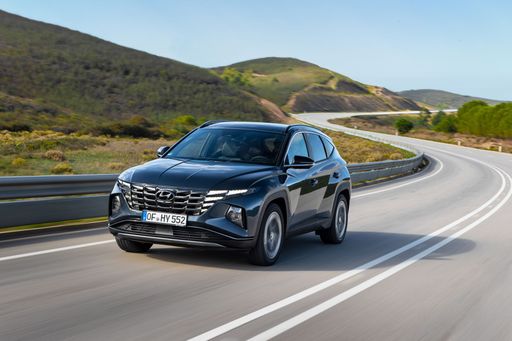 @ hyundai.news
@ hyundai.news
 @ hyundai.news
@ hyundai.news
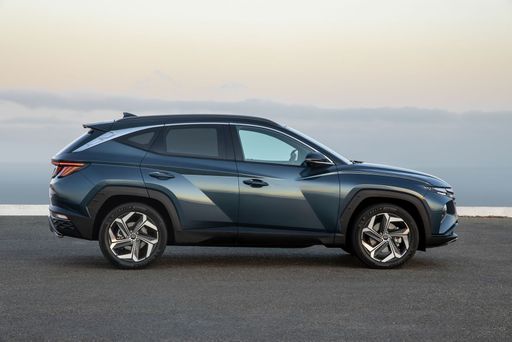 @ hyundai.news
@ hyundai.news
 @ hyundai.news
@ hyundai.news
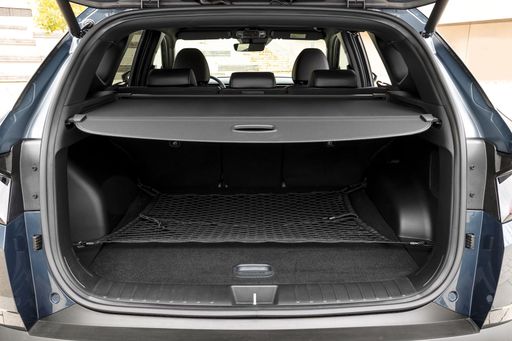 @ hyundai.news
@ hyundai.news
Dacia Bigster
The Bigster is poised to redefine the SUV segment with its bold design and spacious interior, catering to the needs of both families and adventure seekers alike. Emphasizing sustainability and practicality, this model reflects a modern approach to automotive engineering, making it a compelling choice for environmentally conscious drivers. With its striking presence on the road, the Bigster not only captures attention but also embodies a new era of versatile mobility.
Tiedot @ media.renault.at
@ media.renault.at
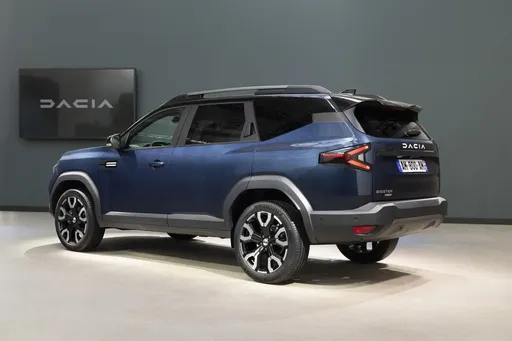 @ media.renault.at
@ media.renault.at
 @ media.renault.at
@ media.renault.at
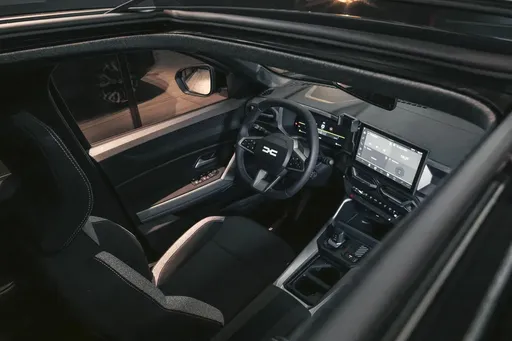 @ media.renault.at
@ media.renault.at
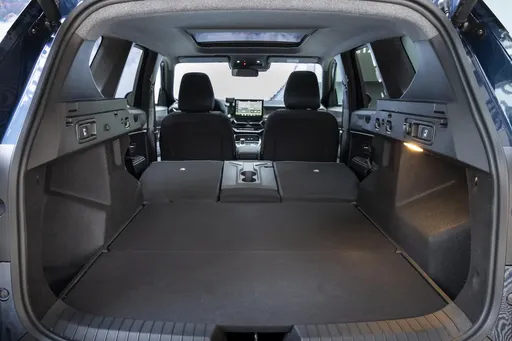 @ media.renault.at
@ media.renault.at

|

|
|
|
|
Kustannukset ja kulutus |
|
|---|---|
|
Hinta
35700 - 54100 €
|
Hinta
24000 - 31000 €
|
|
Kulutus L/100km
1 - 6.9 L
|
Kulutus L/100km
4.7 - 7.1 L
|
|
Kulutus kWh/100km
-
|
Kulutus kWh/100km
-
|
|
Sähköinen toimintasäde
64 - 70 km
|
Sähköinen toimintasäde
-
|
|
Akun kapasiteetti
-
|
Akun kapasiteetti
-
|
|
CO2
22 - 156 g/km
|
CO2
106 - 137 g/km
|
|
Polttoainesäiliön tilavuus
42 - 54 L
|
Polttoainesäiliön tilavuus
50 - 55 L
|
Mitat ja kori |
|
|---|---|
|
Kori
SUV
|
Kori
SUV
|
|
Istuimet
5
|
Istuimet
5
|
|
Ovet
5
|
Ovet
5
|
|
Omamassa
1520 - 1889 kg
|
Omamassa
1425 - 1547 kg
|
|
Tavaratila
546 - 620 L
|
Tavaratila
510 - 667 L
|
|
Pituus
4510 - 4520 mm
|
Pituus
4570 mm
|
|
Leveys
1865 mm
|
Leveys
1813 mm
|
|
Korkeus
1650 mm
|
Korkeus
1705 mm
|
|
Maksimi tavaratila
1721 - 1799 L
|
Maksimi tavaratila
1813 - 1937 L
|
|
Kantavuus
525 - 545 kg
|
Kantavuus
383 - 467 kg
|
Moottori ja suorituskyky |
|
|---|---|
|
Moottorityyppi
Diesel MHEV, Bensiini MHEV, Bensiini, Täyshybridi, Plug-in hybridi
|
Moottorityyppi
Bensiini MHEV, Täyshybridi, Kaasu (LPG)
|
|
Vaihteisto
Automaatti, Manuel
|
Vaihteisto
Manuel, Automaatti
|
|
Vaihteiston tyyppi
Kaksoiskytkin automaatti, Manuaalivaihteisto, Automaattivaihteisto
|
Vaihteiston tyyppi
Manuaalivaihteisto, Automaattinen manuaalivaihteisto
|
|
Vetotapa
Etuveto, Neliveto
|
Vetotapa
Neliveto, Etuveto
|
|
Teho hv
136 - 252 hv
|
Teho hv
130 - 155 hv
|
|
Kiihtyvyys 0-100 km/h
7.9 - 11.6 s
|
Kiihtyvyys 0-100 km/h
9.7 - 11.2 s
|
|
Huippunopeus
180 - 194 km/h
|
Huippunopeus
180 km/h
|
|
Vääntömomentti
265 - 367 Nm
|
Vääntömomentti
230 Nm
|
|
Sylinterien lukumäärä
4
|
Sylinterien lukumäärä
3 - 4
|
|
Teho kW
100 - 185 kW
|
Teho kW
96 - 115 kW
|
|
Iskutilavuus
1598 cm3
|
Iskutilavuus
1199 - 1799 cm3
|
Yleiset |
|
|---|---|
|
Mallivuosi
2024
|
Mallivuosi
2025
|
|
CO2-tehokkuusluokka
E, F, D, B
|
CO2-tehokkuusluokka
E, D, C
|
|
Merkki
Hyundai
|
Merkki
Dacia
|
Millaisia voimalinjoja Hyundai Tucson:ssa on saatavilla?
Saatavilla olevat vaihtoehdot: Etuveto tai Neliveto.
Näytetyt hinnat ja tiedot ovat arvioita, jotka perustuvat Saksan listahintoihin, ja voivat vaihdella maittain. Nämä tiedot eivät ole oikeudellisesti sitovia.
